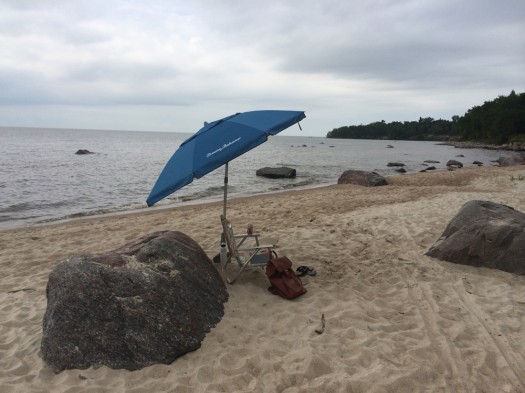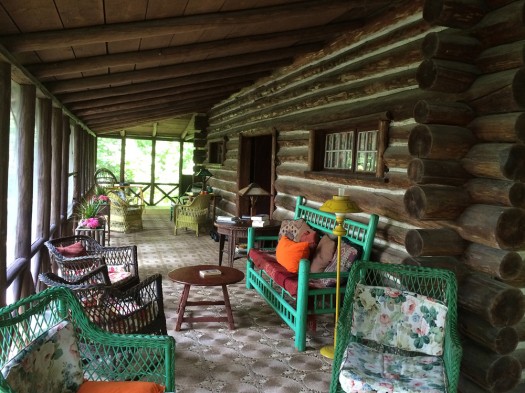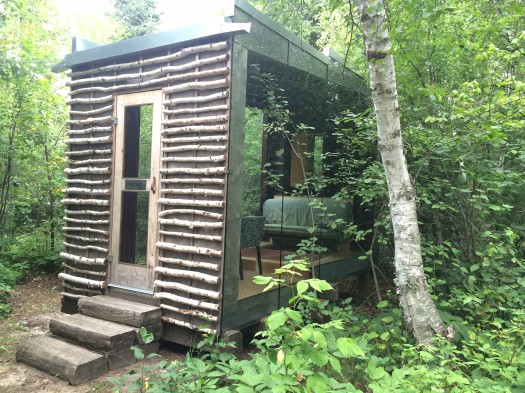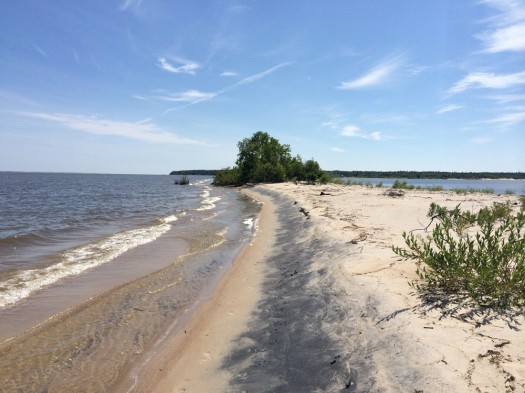A Placemaking Journal
Lean Urbanism: A century practice?
Spending time in Victoria Beach, I’m again enjoying one of Manitoba’s best examples of Lean Urbanism, experienced with family and friends. Many of you heard me talk of the history and practice of this place last year. This 100-year old cottage community, accessible to most ages on foot and bike, has much to share with the nascent Lean Urbanism movement.
But the last time I blogged Victoria Beach, Lean Urbanism wasn’t born. The Project for Lean Urbanism is all about removing barriers to building resilient neighborhoods, cutting the red tape via:
Open-access: more people actively building their homes, businesses, and communities
Open-source: creating tools and techniques to share
Open-ended: focusing on incremental change
Lean Urbanism is halfway between Tactical Urbanism and Smart Growth / New Urbanism. Its tools work around onerous financial, bureaucratic, and regulatory processes via: Lean Building, Lean Development, Lean Business, Lean Green, Lean Regulation, Lean Infrastructure, and Lean Education. Victoria Beach has a few insights to share about each of those.
Lean Building: The 98-year old cottage we are renting was built over three summers, as the family camped on the beach. The logs were used for walls, and branches for furniture. While the cottage is usable six months a year, a nearby one-room cabin has been the home of the owner during the winter.
Victoria Beach is generally a conserving culture instead of a consuming culture. People tend to be more proud of the age of their beater bike than the shiny new versions. I’m pretty sure the one I’m using is almost as old as me. Recycling building products is also big here, like this guest house designed and built by architect, Gordon Filewych, that recycles the plate glass windows from the iconic Eaton’s building before it was demolished.
Lean Development: Victoria Beach’s street grid of dirt roads are reserved for pedestrians and cyclists only, making for more free-range kids per capita than I’ve ever seen. Solo runs by kids to the bakery, general store, restaurant, ice cream stand, library, clubhouse, and tennis courts are a constant occurrence. Only on the beach, marina, pier, and golf course are parents more in direct oversight of our children. Cars are relegated to a parking lot at the town entrance, with slow taxi service provided for special needs, keeping the skinny streets safer than usual. Individual lots are usually left uncleared with very minimal lawns, providing a greater degree of privacy, natural cooling, and connection with nature.
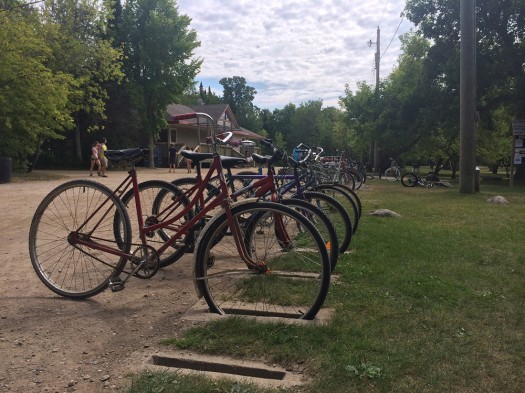
Lean Business: While the bakery, general store, and restaurant are well-established, a large number of smaller entrepreneurial services are advertised on the billboard and newspaper. And that starts with 8-year old boys who transport and sort recycling via bicycle. At $3 per trip, it’s not a bad gig.
The dense development creates a sort of maker space between the residents and visitors, with more than a few Manitoba business ideas hatched at Victoria Beach. The sharing economy and collaborative consumption are big here, with friends sharing cottages and their amenities. We enjoyed borrowing a 42-year old canoe from friends, paddling around the peninsula to explore the shore from a different perspective. Bike sharing has a new twist here — people stop by the bike shop and help rebuild bikes, paint them with green fenders, and then share them freely.
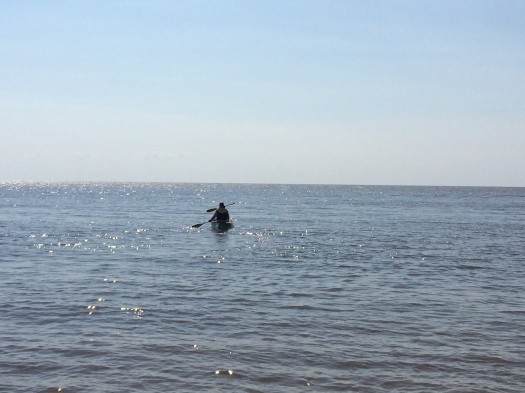
Lean Green: For this neck of the woods, the unusually dense development of quarter-acre lots keep people from bothering the bears — although a family of three bears sometimes amble the streets of the community, peacefully so far. The nearby Elk Island is a wildlife preserve, with a sandbar connecting it to Victoria Beach. The more adventurous residents can be seen daily walking between the two, chest-deep on the sandbar.
Lean Regulation: The salient points of the Victoria Beach by-law are reproduced on a double sided letter-sized card, definitely qualifying it as a pocket code. While I haven’t reviewed the rest of the development by-law, it’s enabling many SmartCode development patterns.
Lean Infrastructure: Water lines are often exposed through the woods or in a shallow tench, certainly lean although arguably less than serviceable, as several cottages didn’t have water until May of this year. Of course, in the nearby metropolis of Winnipeg, this was also true of standard water lines, thanks to the harsh winter. Sewer is provided by septic tanks and fields, which also have some challenges due to seasonal use. Not clearing the woods around golf course fairways saved on costs, and makes for one challenging course. The lack of gravel or pavement on the dirt roads is the most satisfying of Victoria Beach’s lean infrastructure.
Lean Education: While there are no schools in this resort community, summer educational opportunities abound via the convener-led activities: cycling and cross country races, tennis tournaments, swimming and sailing lessons, and the list goes on. The librarians are several tween girls, and instructors, taxi drivers, and bakery staff are often teens.
To delve a little deeper into the VB history, check out 100 Summers on Lake Winnipeg: A Resort History of Victoria Beach, published this summer by historians Greg Thomas and Sheila Grover. This book is particularly interesting in the telling of the power of vision — when a development master plan is beautiful and passionately supported by locals, it stands the test of time.
All of this lean litany isn’t much different of a story than when this place started a hundred years ago. Just that back then we had less regulation controlling our every move. What regulations would we need to ease up on now to let more of these sorts of satisfying places rise up?
–Hazel Borys
If PlaceShakers is our soapbox, our Facebook page is where we step down, grab a drink and enjoy a little conversation. Looking for a heads-up on the latest community-building news and perspective from around the web? Click through and “Like” us and we’ll keep you in the loop.









